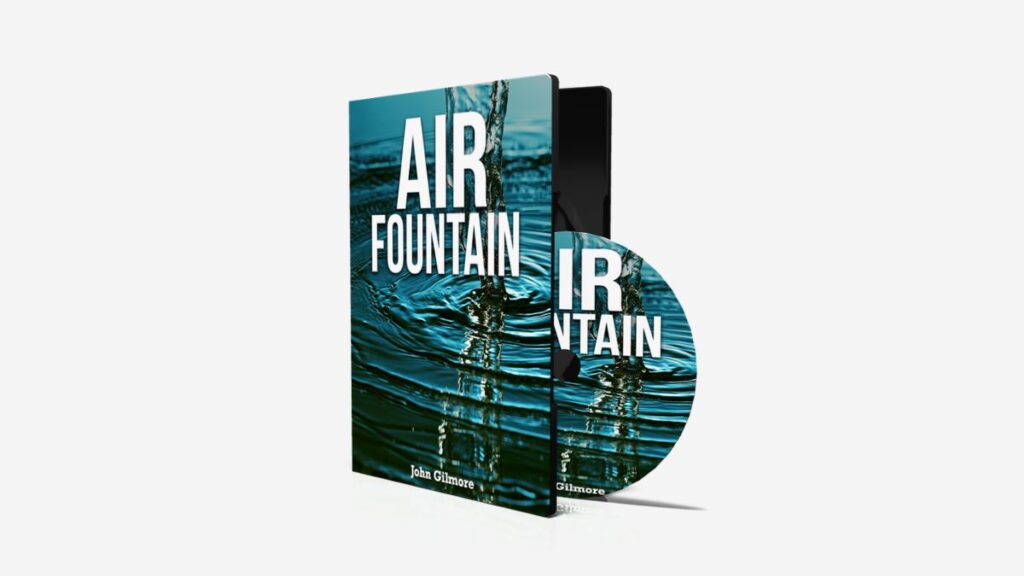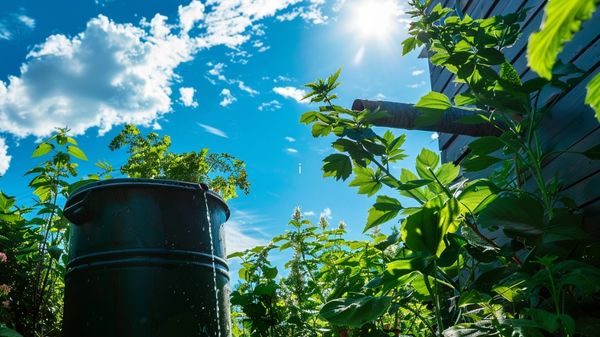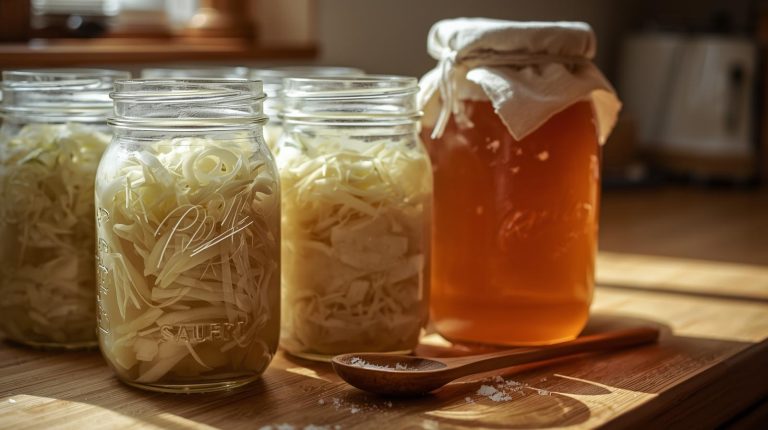In confronting water scarcity and promoting sustainability, there are 10 alternative solutions to traditional on-demand water supply systems you might consider.
These include: rainwater harvesting systems, dew collection techniques, atmospheric water generators, advanced wastewater treatment practices, wastewater reuse systems, greywater recycling innovations, solar-powered desalination techniques, bio-sand filtration systems, portable water purification devices, and efficient techniques in water use and irrigation like hydroponic conservation methods, or smart irrigation solutions.
Each of these alternatives offers unique solutions, catering to different conditions and requirements, all with sustainability and environmental conservation as a priority. Dive further to judge which of these incredible innovations can best meet your needs and contribute to a more sustainable future.
Key Takeaways
- Rainwater Harvesting Systems provide a sustainable alternative by collecting and storing rainwater for various uses.
- Atmospheric Water Generators extract water directly from air moisture, offering a portable and user-friendly water supply solution.
- Wastewater Reuse techniques treat and repurpose wastewater, reducing dependency on freshwater sources and promoting sustainability.
- Solar-Powered Desalination processes convert seawater into fresh drinking water using solar energy, providing an environmentally-friendly solution to water scarcity.
- Smart Irrigation Solutions integrate technology to optimize water use, promoting efficient watering practices and healthier plant growth.
Rainwater Harvesting Systems
Rainwater harvesting systems are not just eco-friendly, they’re also a practical solution that can liberate you from dependency on public water supplies.
Here’s how it works. Rainwater is collected from a rooftop catchment — that’s any surface where rain falls directly. This could be your roof, a patio, or even a specially designed area. The water is then channeled into a storage tank via gutters and pipes.
But before it’s ready for use, it has to go through rainwater filtration to remove any debris or contaminants.
What’s great about rainwater harvesting systems is that they’re adaptable to your needs. You can use this water for gardening, flushing toilets, washing cars, or with additional treatment, even drinking. It’s a system that’s flexible, cost-effective, and empowers you with control over your own water supply.
But the benefits don’t stop there. In times of drought, your personal reservoir can be a real lifesaver. Plus, you’re helping to conserve natural resources and reduce stormwater runoff.
Related Post: Ultimate Rainwater Harvesting Techniques for Sustainable Living.
Dew Collection Techniques
While rainwater harvesting systems offer a viable alternative to traditional water supplies, they’re not the only game in town. Let’s explore another fascinating method: dew collection techniques. You’d be surprised by their effectiveness and simplicity.
Dew harvesting is an age-old practice, but its modern applications are both innovative and liberating. Consider this: you’re using the natural process of condensation to collect water, a method that requires minimal resources and provides a sustainable, off-grid solution.
Imagine the liberation when you’re no longer reliant on traditional water supply systems! In essence, you’re capturing the moisture from the air that condenses on cool surfaces overnight. This process is aided by condensation traps, which are cleverly designed systems that capitalize on the temperature difference between the night air and the early morning ground temperature.
These traps can be as simple as plastic sheets spread over a pit in the ground or more complex structures, all designed to maximize dew collection.
Air Fountain: Your Solution for the Impending Water Crisis
Solar-Powered Desalination
Harnessing the power of the sun, solar-powered desalination presents another intriguing alternative to traditional water supply systems. Imagine, you’re no longer dependent on a centralized supply for your daily water needs. Instead, you’re tapping into the limitless energy of the sun and vast ocean resources, turning salty sea water into fresh drinking water.
Solar technology brings this liberty to your doorstep. Here’s how it works: a solar desalination unit captures the sun’s heat to evaporate sea water. This vapor then condenses into pure water, leaving the salt and other impurities behind. It’s a simple, natural process mimicking the earth’s water cycle, yet it’s incredibly effective.
Solar-powered desalination liberates you from water scarcity, unpredictable supply disruptions, and high utility bills. It’s not just about saving money, it’s about claiming your independence. With this innovation, you’re aligning your lifestyle with the rhythms of nature, participating in a sustainable cycle of life.
Atmospheric Water Generators
Moving from the boundless energy of the sun and the sea, let’s explore another innovative solution that draws from the very air we breathe – atmospheric water generators. These devices offer you liberation from traditional water supply systems by extracting water directly from atmospheric moisture.
Here’s how they work:
- First, they absorb humid air.
- Then, they cool this air down, leading to condensation.
- The water droplets formed are collected and filtered.
- After purification, you’re left with clean, drinkable water.
- The whole process is powered by electricity, which can potentially be sourced from renewable sources.
Atmospheric water generators are a game-changer. They provide a sustainable solution for water extraction, especially in areas with high humidity levels. You can use these devices in both rural and urban settings.
They’re portable, user-friendly, and require little maintenance. Plus, they’re not dependent on water infrastructure, which makes them an ideal solution for disaster-prone areas or regions lacking access to clean water.
In the journey towards water independence, atmospheric water generators are a promising step. They equip you with the power to harness the moisture around you, transforming it into an essential resource for life.
Greywater Recycling Innovations
Now, let’s explore the world of greywater recycling innovations. You’re venturing into an evolving domain where eco-friendly plumbing and greywater treatment technologies are revolutionizing how we manage water.
Imagine your home as a mini, eco-friendly water treatment plant. You’re showering, doing the dishes, and washing your hands. Instead of letting that water go down the drain, it’s collected, treated, and circulated back into your home for non-potable uses like flushing toilets or watering plants. This is the power of greywater recycling.
These innovations aren’t just for your home. Businesses and municipalities are catching on, helping to conserve water on a larger scale. Exciting developments in greywater treatment technologies are making the process more efficient and affordable.
Innovative filtration systems, biological treatment methods, and modern disinfection techniques are part of the story. These systems are paving the way for a future where water is viewed not as a disposable resource, but as a significant asset to be recycled and reused.
It’s a liberating shift in perspective, isn’t it? You’re not just a consumer anymore, but a crucial part of the water cycle. Embrace the change, and ride the wave of greywater recycling innovations.
Smart Irrigation Solutions
As you ride the wave of greywater recycling innovations, consider another efficient way to conserve water – smart irrigation solutions. Smart irrigation solutions offer:
- Efficiency: Drip irrigation delivers water directly to the plant roots, reducing evaporation and runoff.
- Control: Moisture sensors provide real-time data, allowing you to adjust watering schedules based on actual conditions.
- Savings: Lower water usage means lower utility bills.
- Conservation: By using only the water you need, you’re doing your part to preserve this precious resource.
- Healthier plants: Proper watering promotes healthier growth and reduces the risk of plant diseases.
Embrace smart irrigation solutions for a more sustainable future. You’re not just making a difference today, but you’re also paving the way for a better tomorrow. Start your journey towards water conservation now, and liberate yourself from traditional, wasteful practices.
Wastewater Treatment Advances
Diving into the world of wastewater treatment, you’ll uncover a domain brimming with technological advances. No longer are we bound by old school methods of managing wastewater. Innovative solutions now offer you the freedom to not only treat but also repurpose this precious resource.
Wastewater reuse is one of these leading-edge developments. Imagine turning what was once waste into a beneficial resource. By reusing treated wastewater, you can reduce your dependency on freshwater sources. It’s not just for irrigation either – with the right technology, you can safely use it for a range of applications, from industrial processes to toilet flushing.
Then there’s the concept of nutrient recovery. This isn’t about salvaging leftovers from your dinner plate. No, it’s about extracting valuable nutrients like nitrogen and phosphorous from wastewater. These recovered nutrients can then be used in agriculture, providing a sustainable alternative to chemical fertilizers.
The best part? These advances aren’t just theoretical. They’re already in action, changing the way we view and manage wastewater.
Bio-Sand Filtration Systems
Shifting gears from the progressive world of wastewater treatment, let’s explore the domain of Bio-Sand Filtration Systems. As an essential part of sustainability practices, these systems offer a natural and cost-effective solution to water purification.
They’re simple to construct, operate, and maintain, making them a viable choice for community initiatives seeking to provide clean water. Bio-Sand Filtration Systems have several notable aspects, such as:
- A natural filtration process that eliminates harmful pathogens
- The use of locally available materials, reducing cost and carbon footprint
- Longevity and durability, ensuring a long-term water supply solution
- Minimal maintenance needs, making them user-friendly
- The potential for community-led construction and operation, fostering local empowerment
These systems empower communities with the knowledge and ability to safeguard their health, environment, and future. They’re an indication of the fact that innovative solutions can stem from traditional knowledge, bridging the gap between the past and the future in the quest for liberation.
Become Water Independent with the Revolutionary Air Fountain System

Portable Water Purification Devices
Nearly everyone, at some point, has faced a situation where clean, drinkable water isn’t readily available.
Imagine you’re in a remote location, thirst creeping in, and all you have is a murky water source. Fear not, portable water purification devices are your saving grace. Designed to transform questionable water sources into safe, drinkable water, these devices are compact, lightweight, and easy to use.
Using advanced purification technologies, these devices remove harmful bacteria, viruses, and pollutants, ensuring the water quality is up to standard. Some models use ultraviolet light, others use ceramic filters, while some even employ advanced electrostatic purification techniques.
Here’s the deal: You’re not just getting clean water; you’re gaining the freedom to explore, to travel, to live without the constant worry of water safety. So, whether you’re an adventurer, a survivalist, or just someone who values their health and independence, portable water purification devices are a must-have.
Just remember, it’s not about being chained to conventional water supply systems. It’s about embracing innovative solutions that empower you to take control of your water quality, wherever you may be.
Hydroponic Water Conservation Methods
While portable water purification devices cater to individual needs, it’s also essential to think about larger-scale solutions, especially in the domain of agriculture.
As you explore these methods, you’ll immerse yourself in hydroponic nutrient management and sustainable hydroponic designs. They not only conserve water but also help to create a sustainable future for agriculture.
Here are some key components you should consider:
- Recirculating Systems: This method reuses water, reducing the need for fresh supplies.
- Nutrient Film Technique (NFT): A thin film of nutrients is used, minimizing water usage.
- Drip Irrigation: This delivers water directly to plant roots, reducing waste.
- Water Quality Monitoring: Regular checks help to maintain ideal conditions for plant growth.
- Automated Systems: These handle watering and nutrient supply, reducing human error.
Harnessing these hydroponic water conservation methods is a definite step towards liberation from traditional, resource-intensive agricultural systems. It’s time to embrace these innovative alternatives and contribute to a more sustainable future.
Related Post: Hydroponics Made Easy: Unlock the Secrets of Modern Gardening.
Frequently Asked Questions
What Are the Initial Costs of Implementing These Innovative Water Supply Systems?
You’re looking at an initial investment that varies greatly depending on the system chosen. For instance, a rainwater harvesting setup might cost around $2,000. Yet, despite the upfront costs, you’ll notice long term savings on your water bills.
Solar-powered desalination systems, on the other hand, might set you back about $12,000. It’s a hefty price, but the benefits of a consistent, self-sustaining water supply can’t be underestimated. Do your homework to find the right fit for you.
Are There Any Health Risks Associated With the Use of These Alternative Water Systems?
While you may fear health risks with alternative water systems, don’t worry. Most systems have advanced filtration technologies, reducing the risk of waterborne diseases. However, it’s essential you regularly maintain and monitor your system. If neglected, contaminants could bypass the filtration process, posing health risks.
Always make sure you’re using systems approved by health and safety standards. So, while there’s a small risk, proper use and maintenance substantially mitigate it.
How Do These Alternative Systems Compare to Traditional Systems in Terms of Water Quality?
You’re onto something! Alternative water systems often surpass traditional ones in water quality. Thanks to cutting-edge water purification methods and filtration technologies, they can effectively remove contaminants. You’ll find they often produce cleaner, safer water.
However, it’s essential to regularly maintain and monitor these systems to guarantee peak performance. In comparison to traditional systems, you’re not only getting a sustainable choice but also a health-conscious one with these alternatives.
Are These Innovative Systems Suitable for Use in All Geographical Locations?
You’re right to contemplate geographical adaptability. While these innovative systems can be highly effective, they’re not one-size-fits-all solutions. Some depend on specific environmental conditions, like ample sunlight or rainfall.
Others may have minimal environmental impact but require a certain infrastructure. So, depending on your location’s unique characteristics, some alternatives may suit you better than others. Always thoroughly research and consult an expert before deciding on a water supply system.
What Are the Maintenance Requirements for These Alternative On-Demand Water Supply Systems?
You’ll find that maintaining these innovative systems isn’t much of a hassle. Regular checks and simple conservation techniques can guarantee their longevity. For instance, you’d need to clean filters, inspect for leaks, and implement efficiency measures to reduce water waste.
Conclusion
So, you’ve explored the top 10 alternatives to typical on-demand water supply systems – from rainwater harvesting to hydroponic conservation. These innovative solutions, more than just drops in the bucket, could revolutionize our water usage. By embracing these methods, you’re not just adapting to change; you’re fostering it. Remember, every ripple counts in the vast ocean of water conservation. So, dip your toes in, take the plunge, and help chart the course towards a more sustainable and water-wise future.
Beat the Drought: DIY Water Generation with Air Fountain





